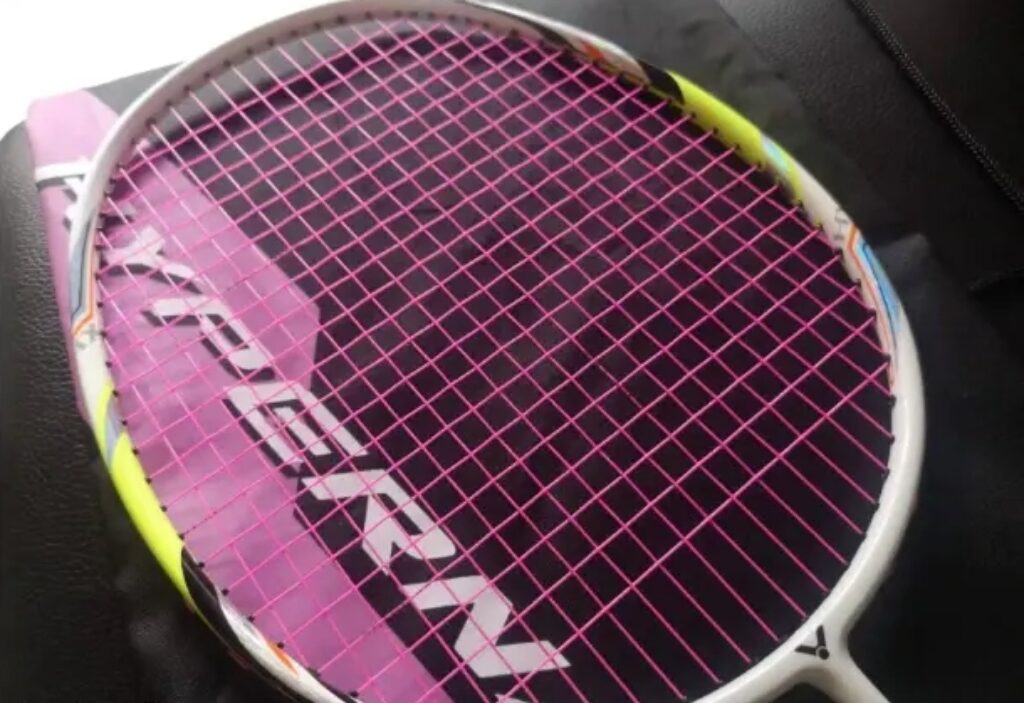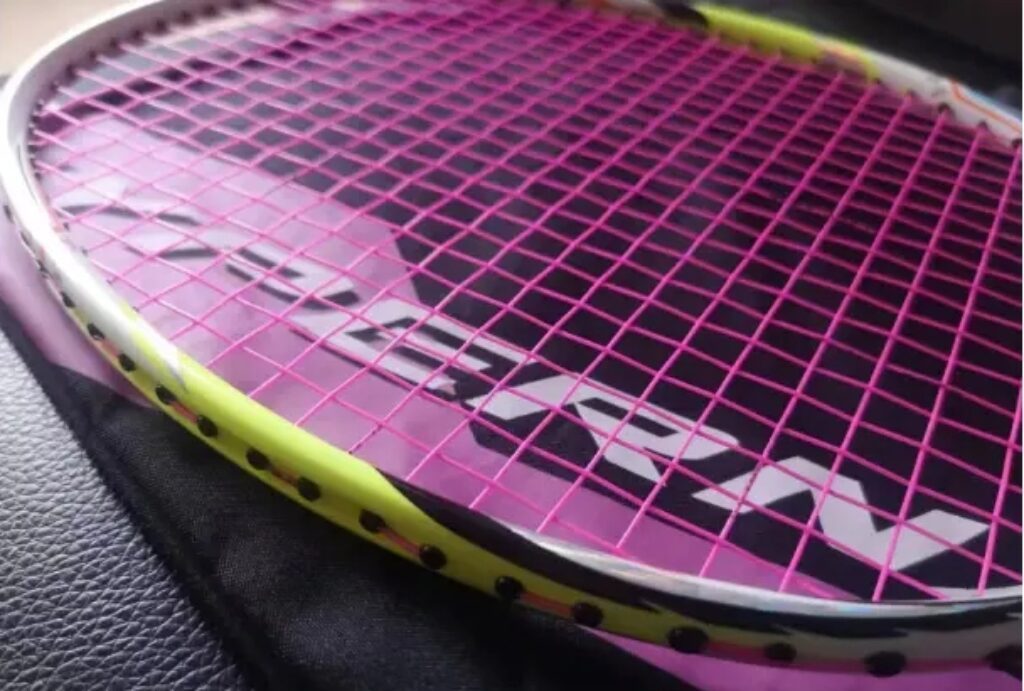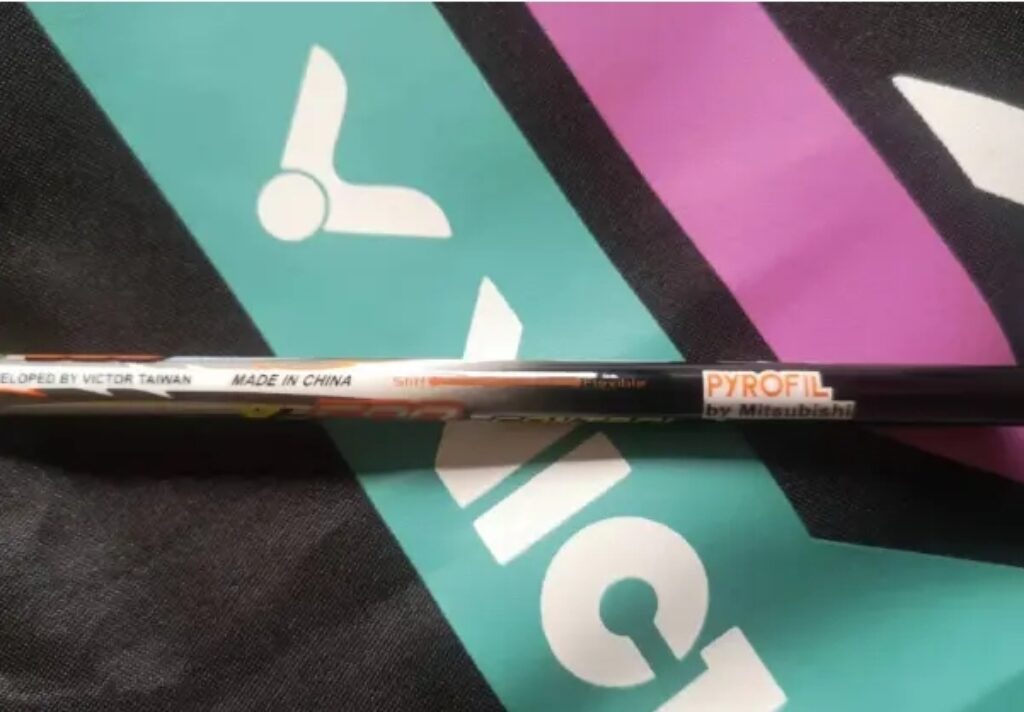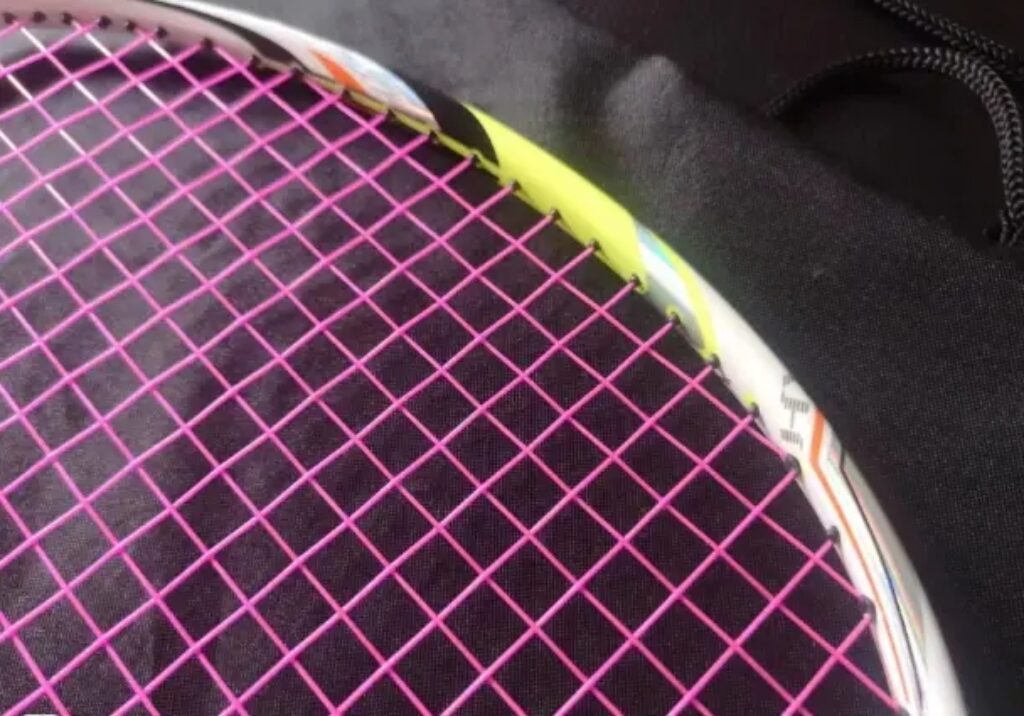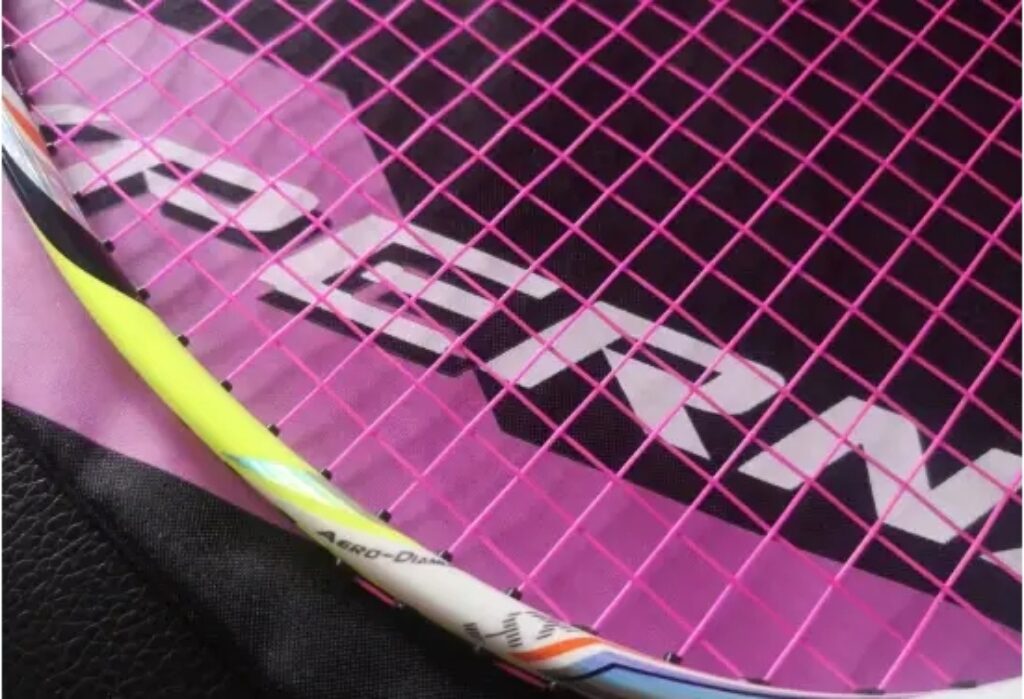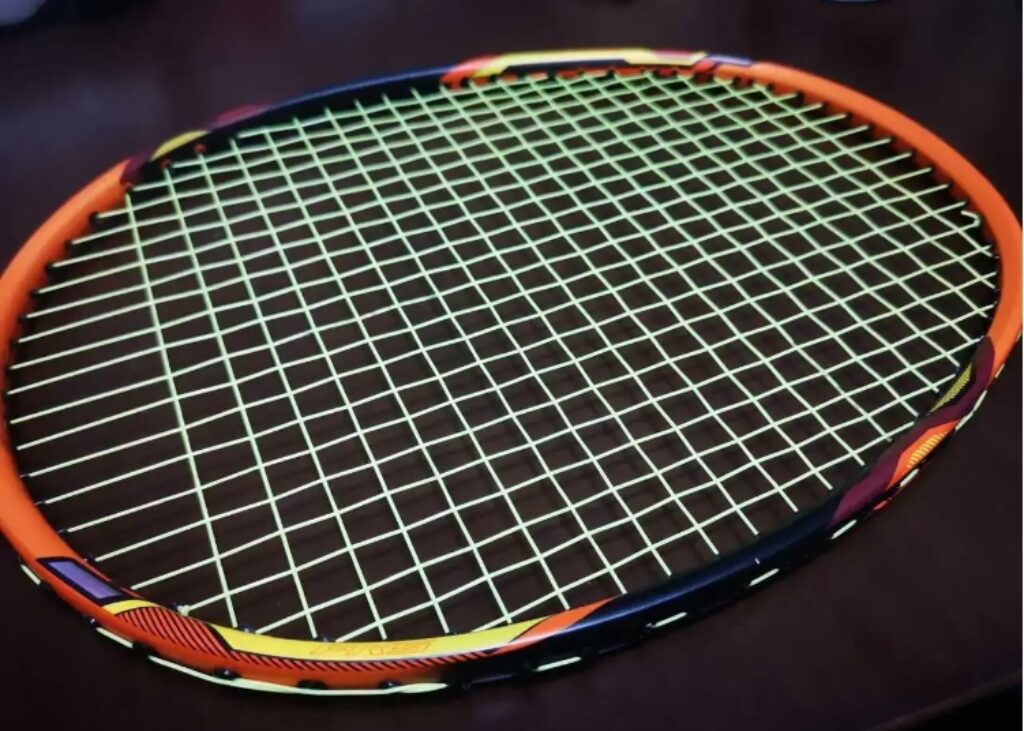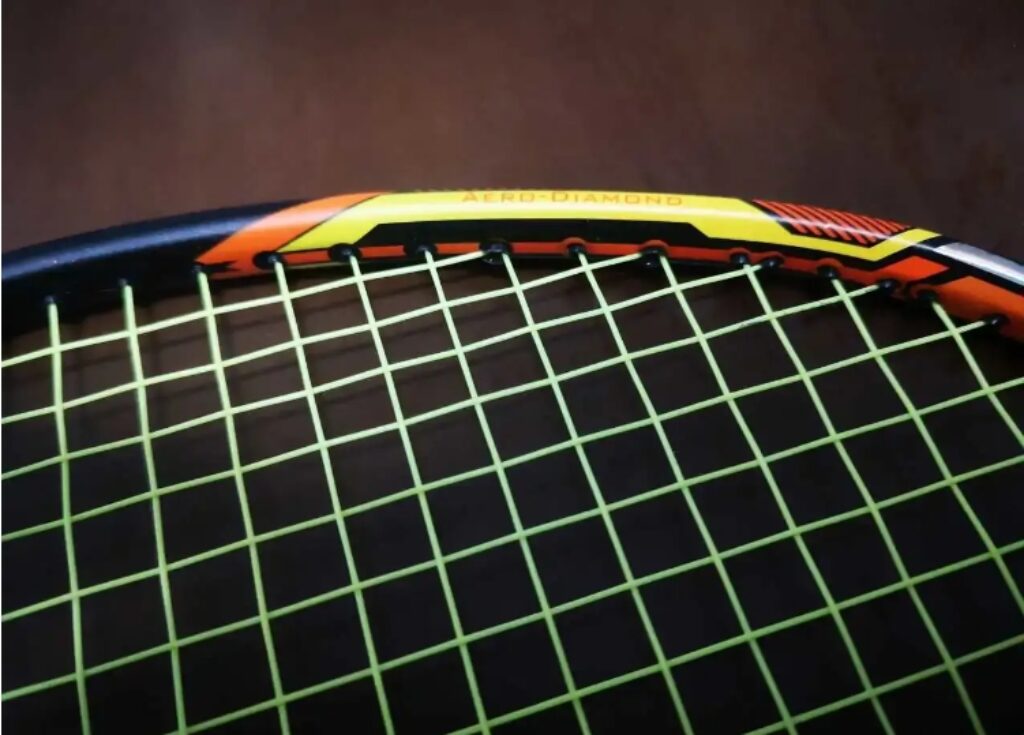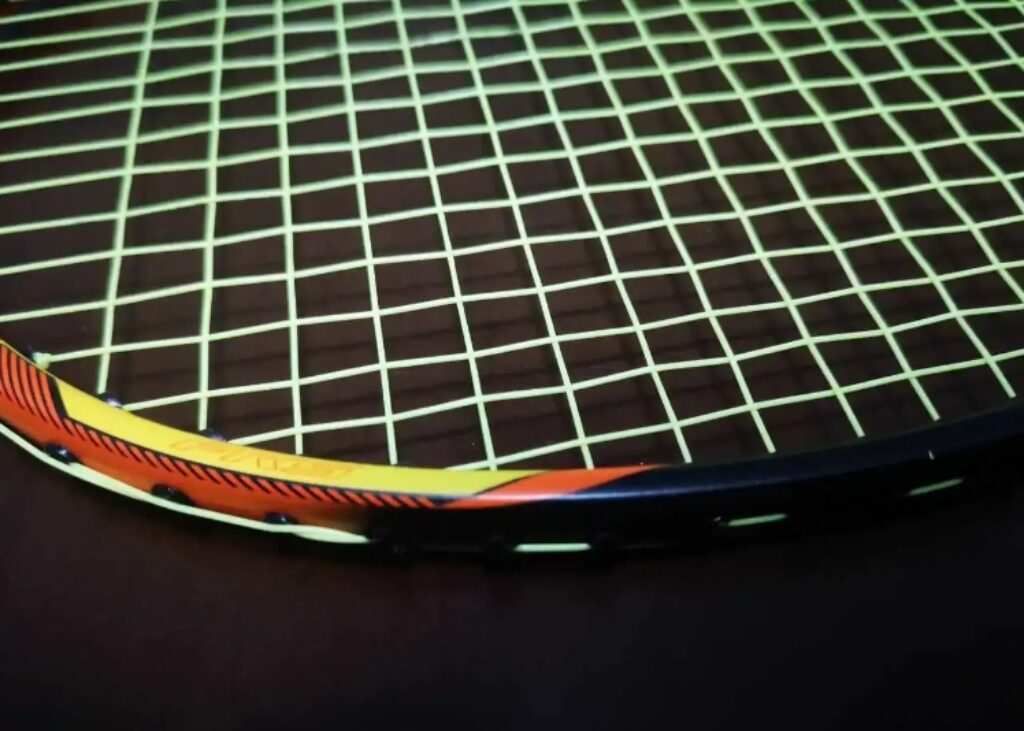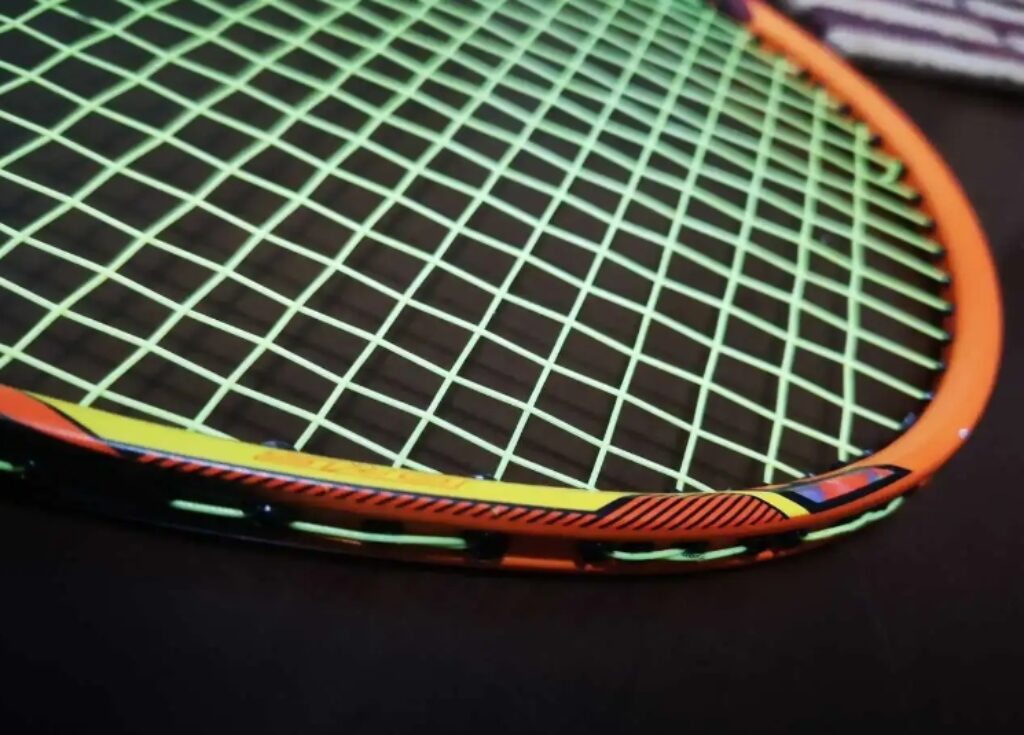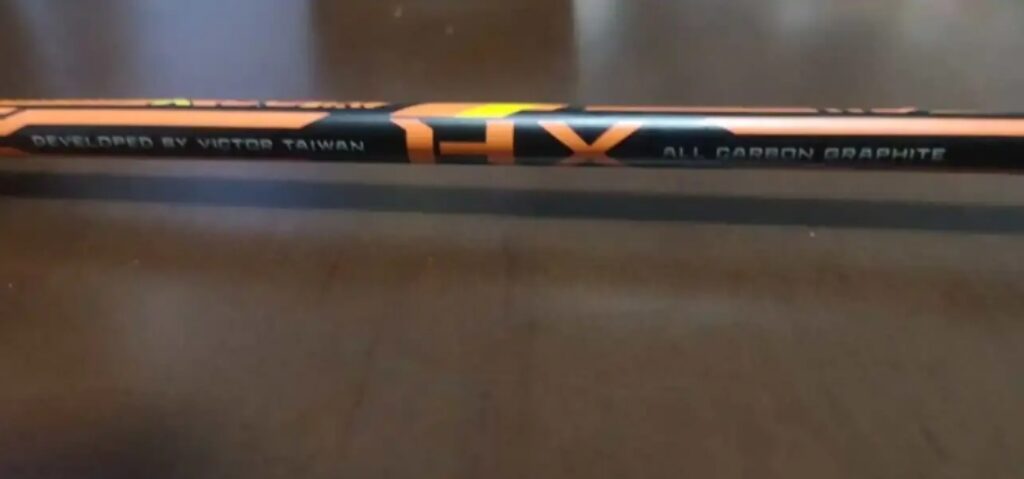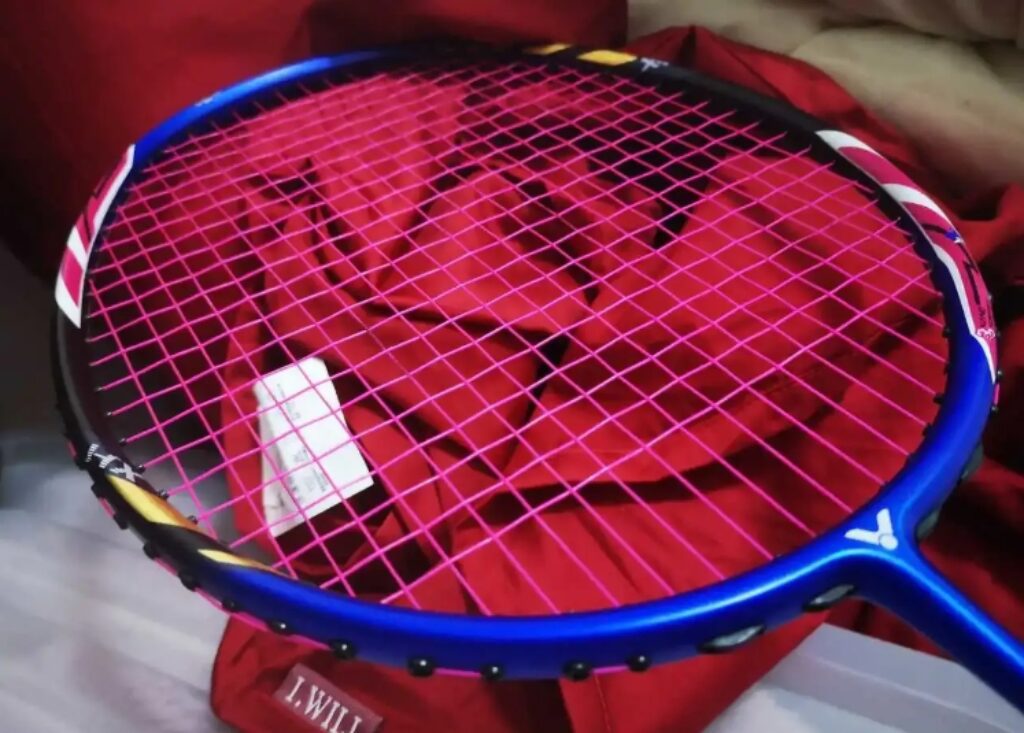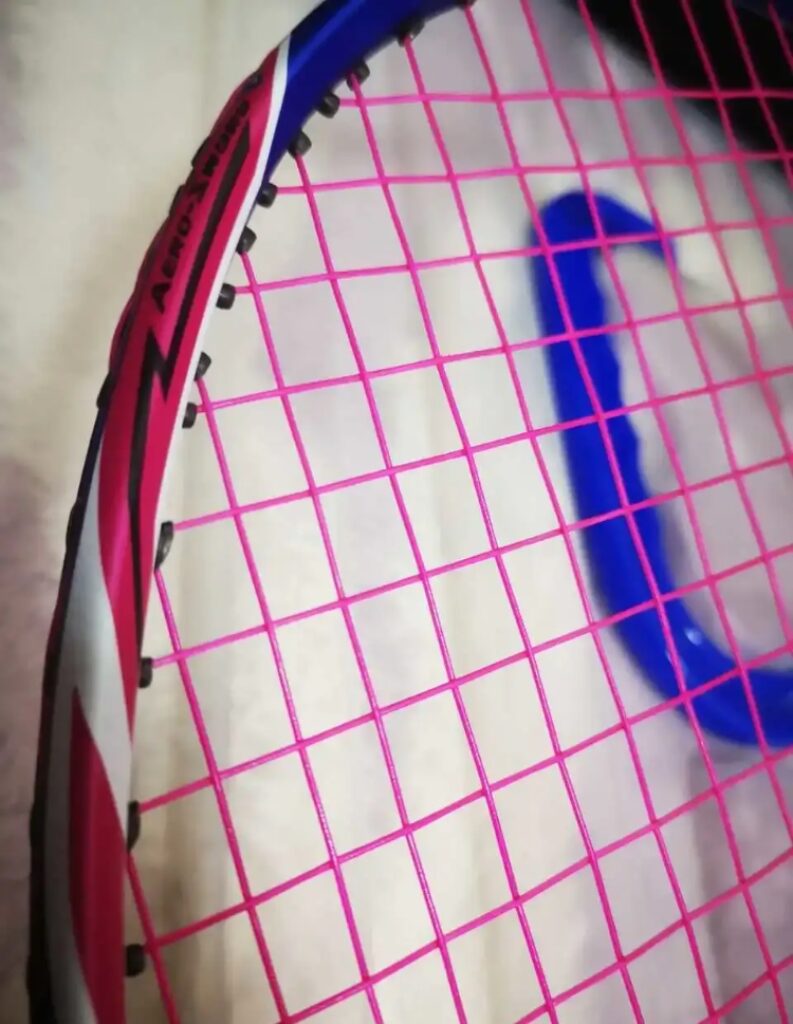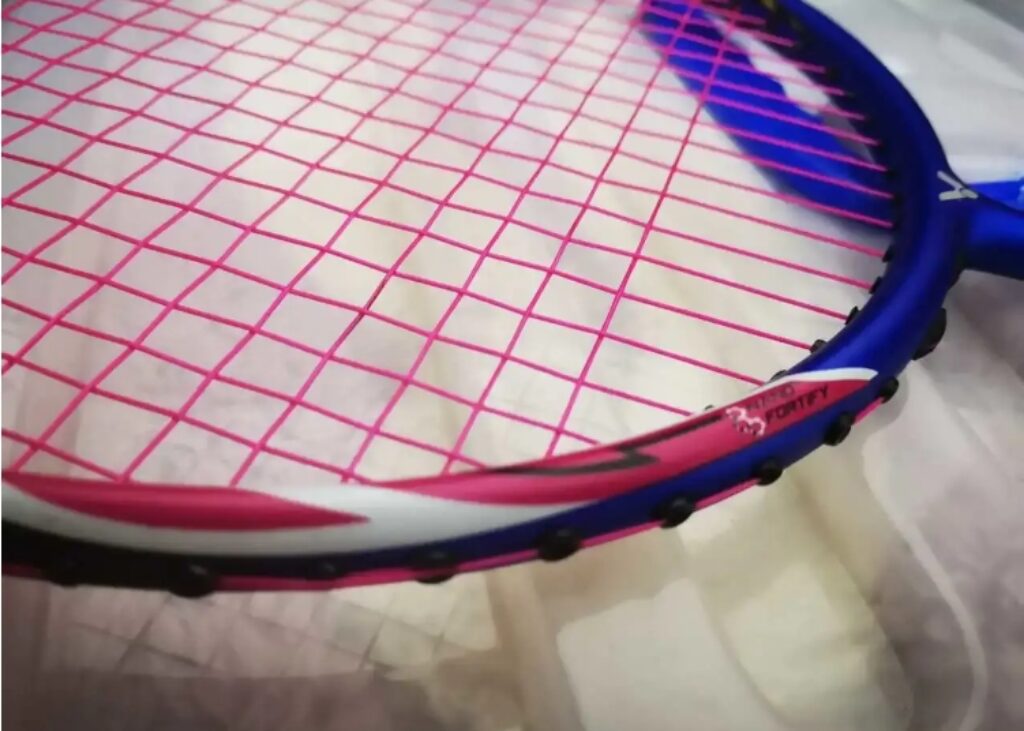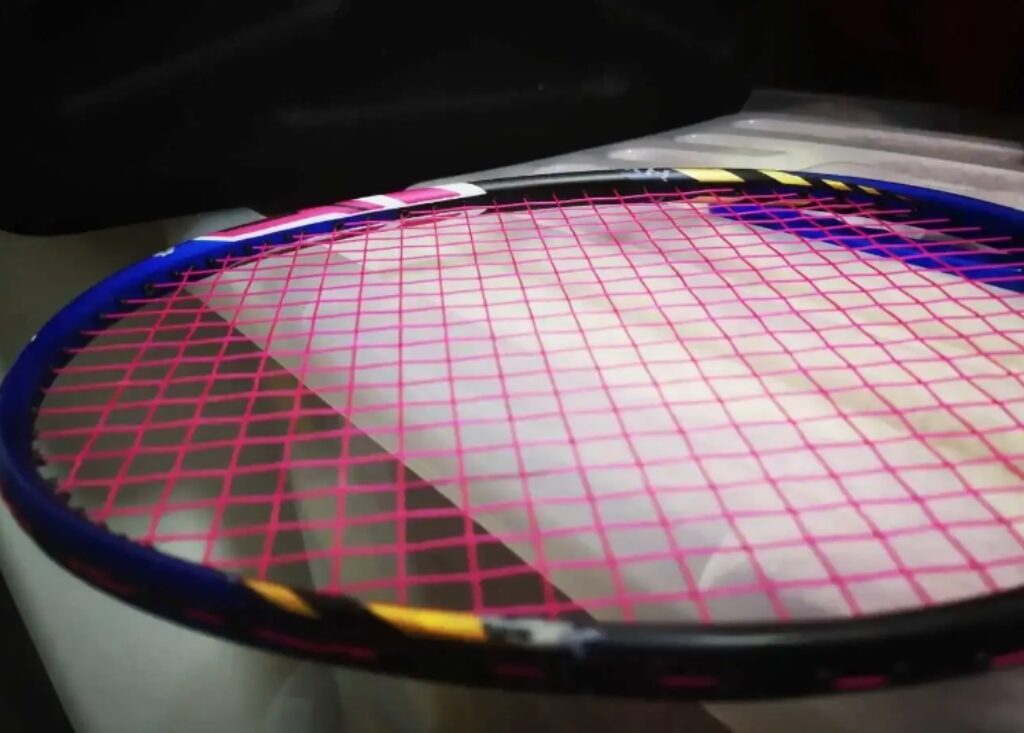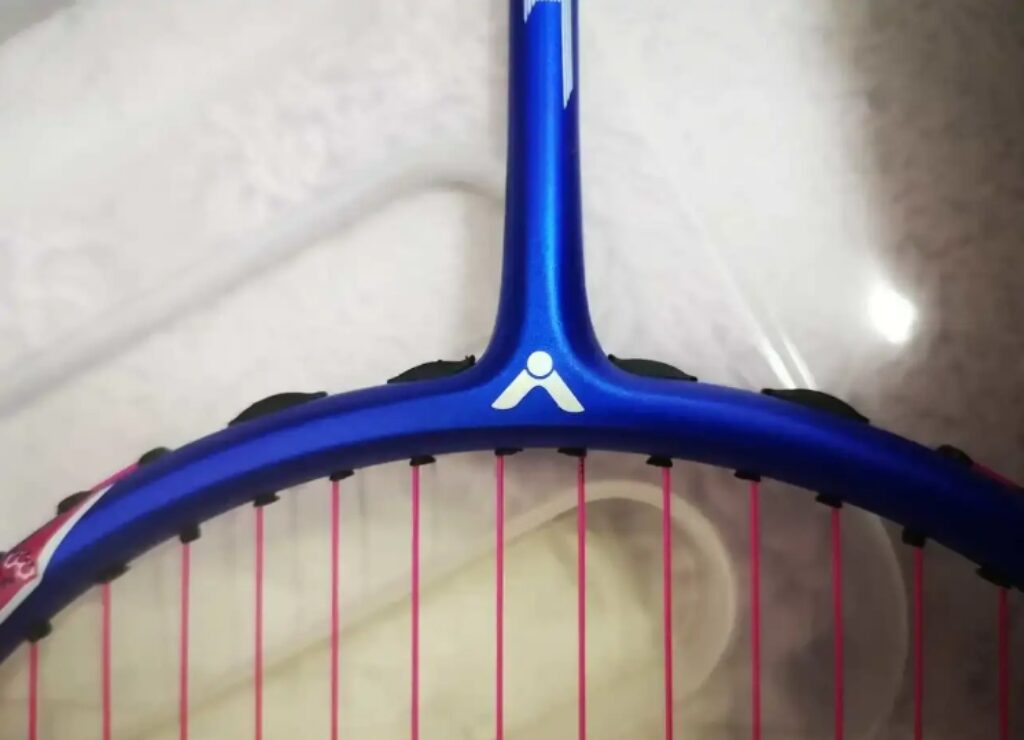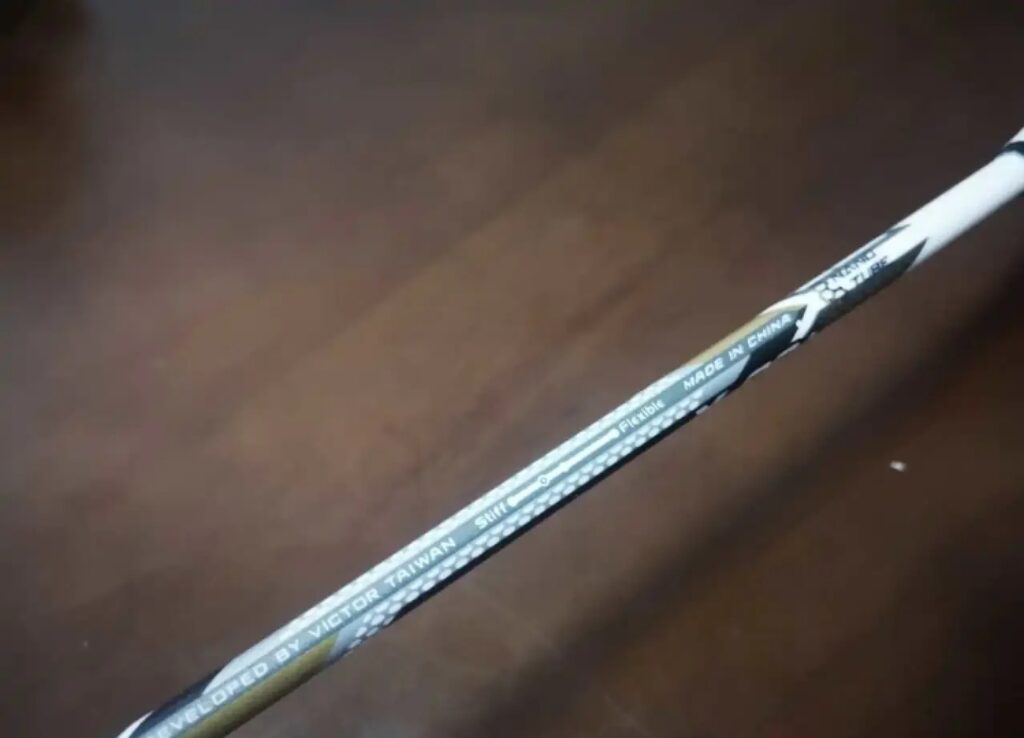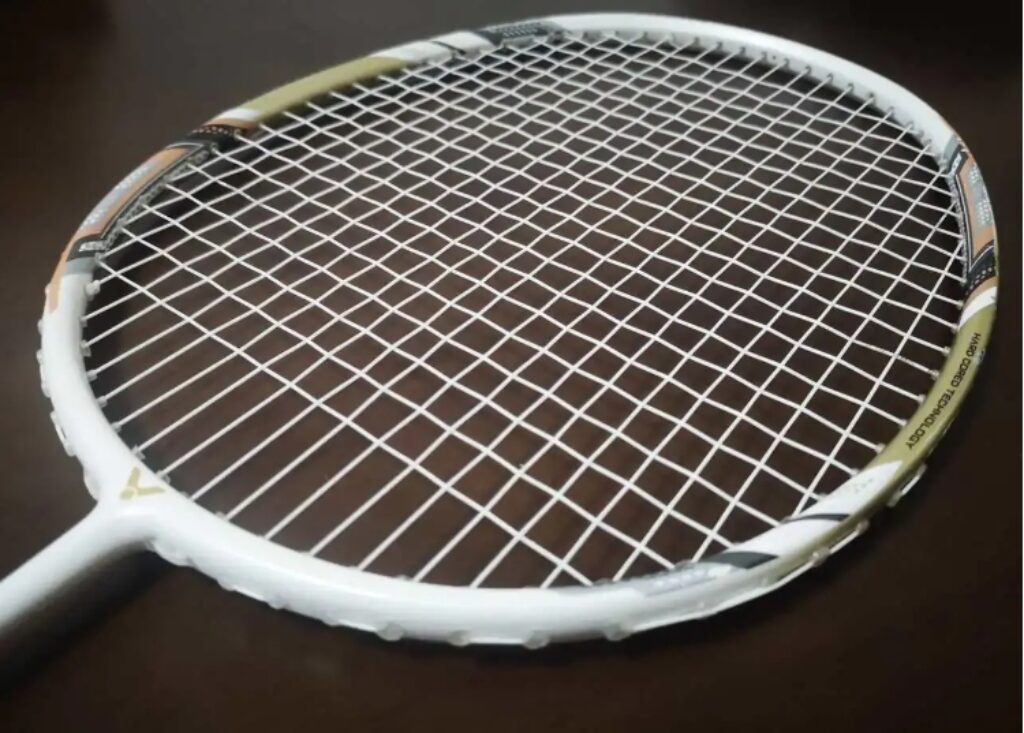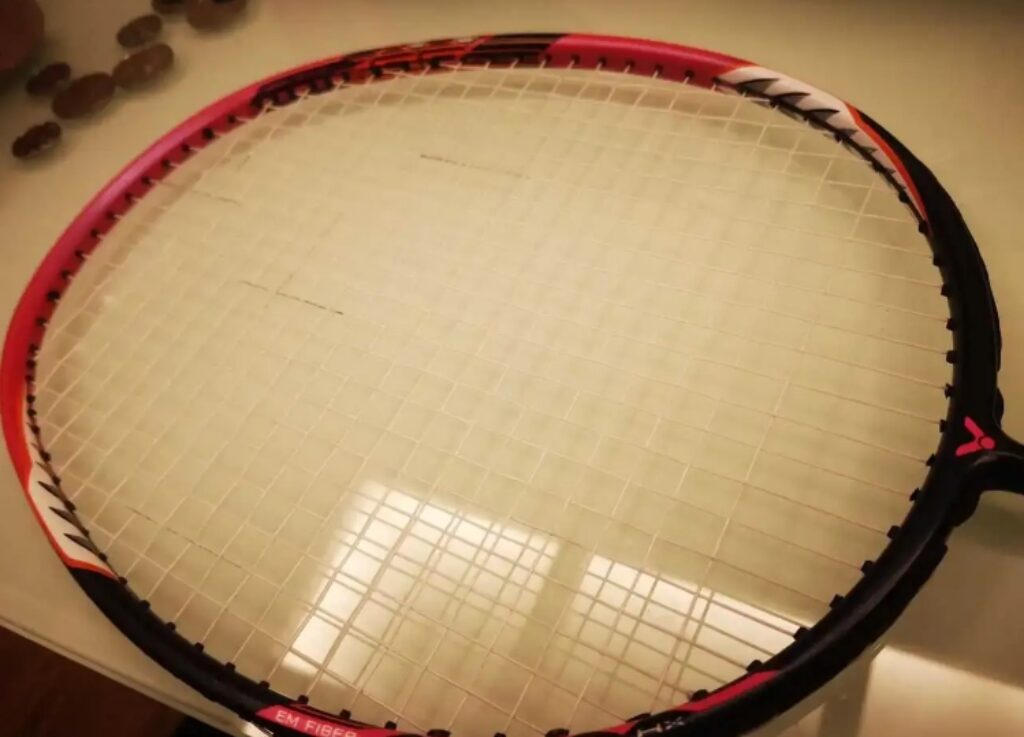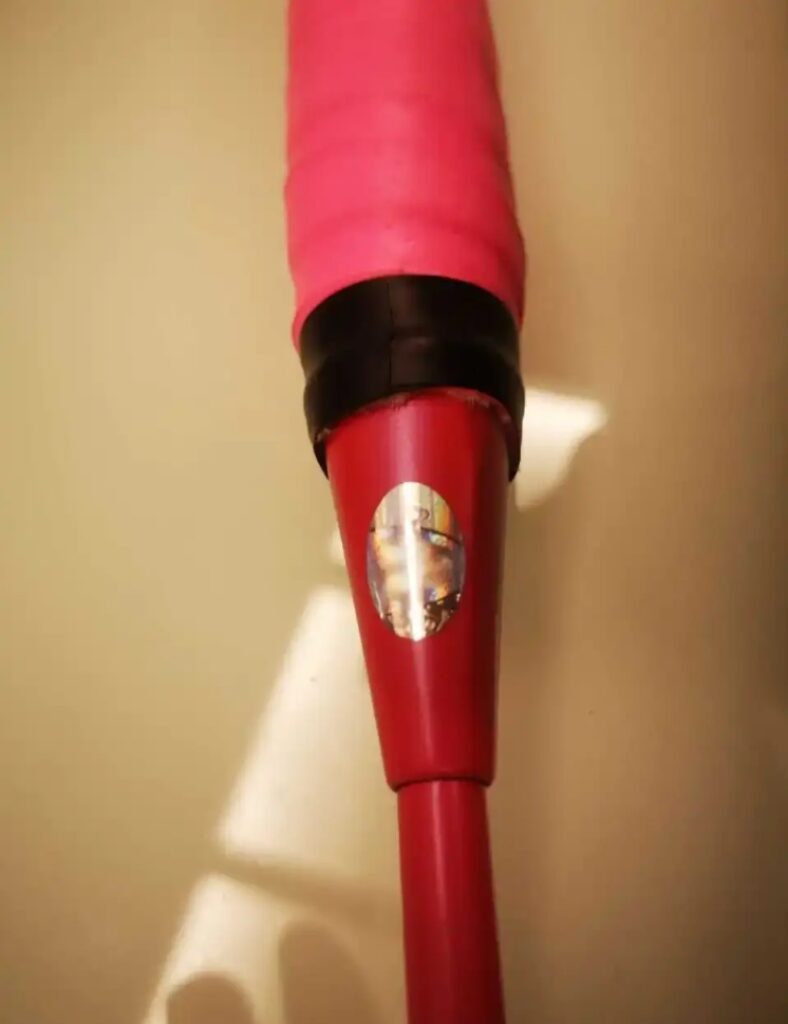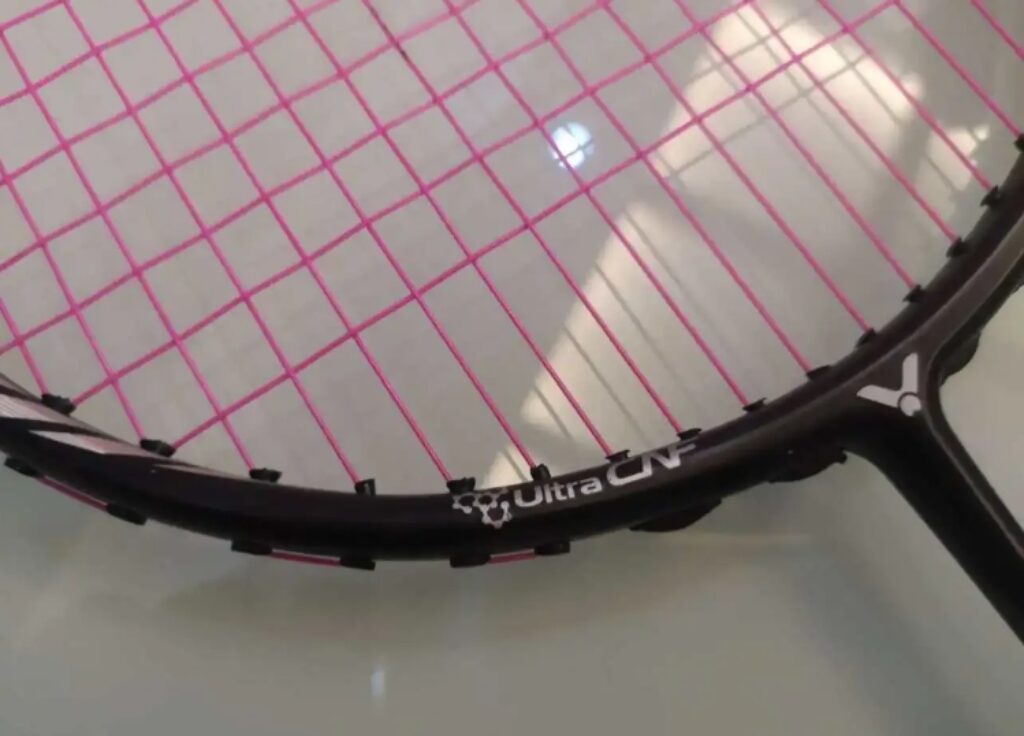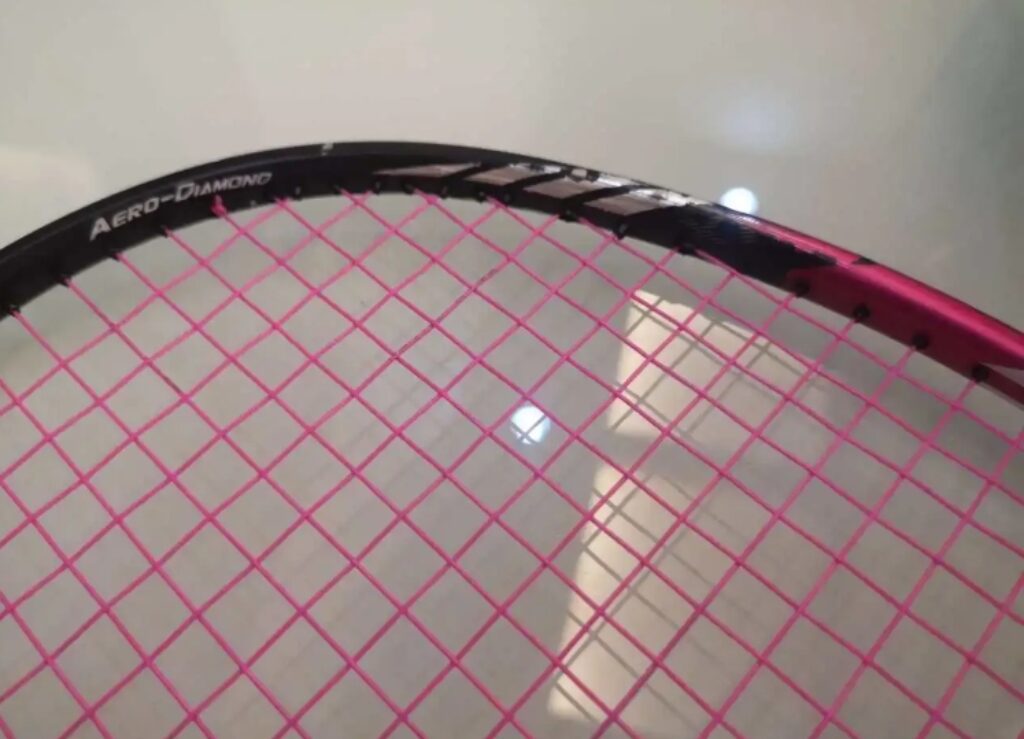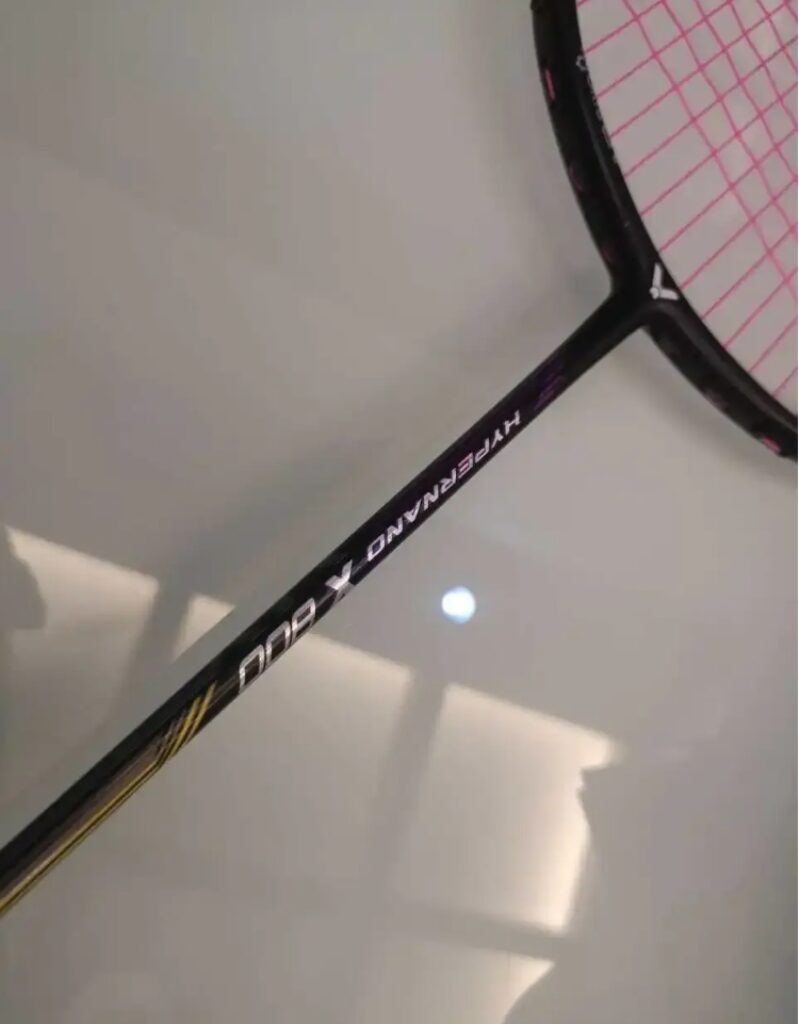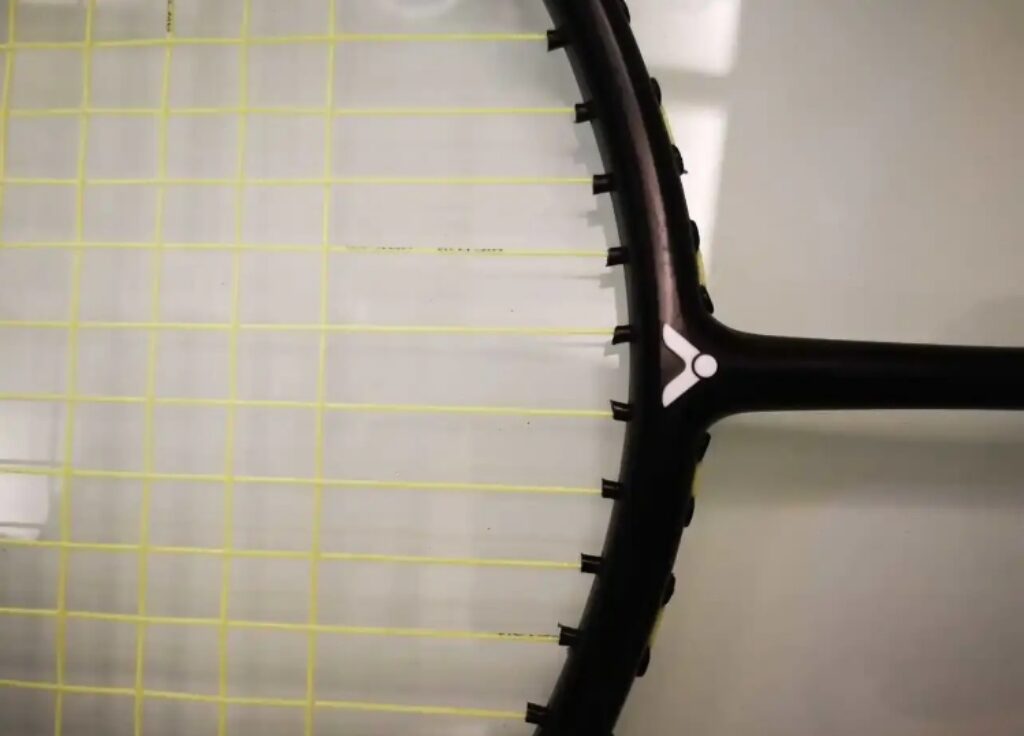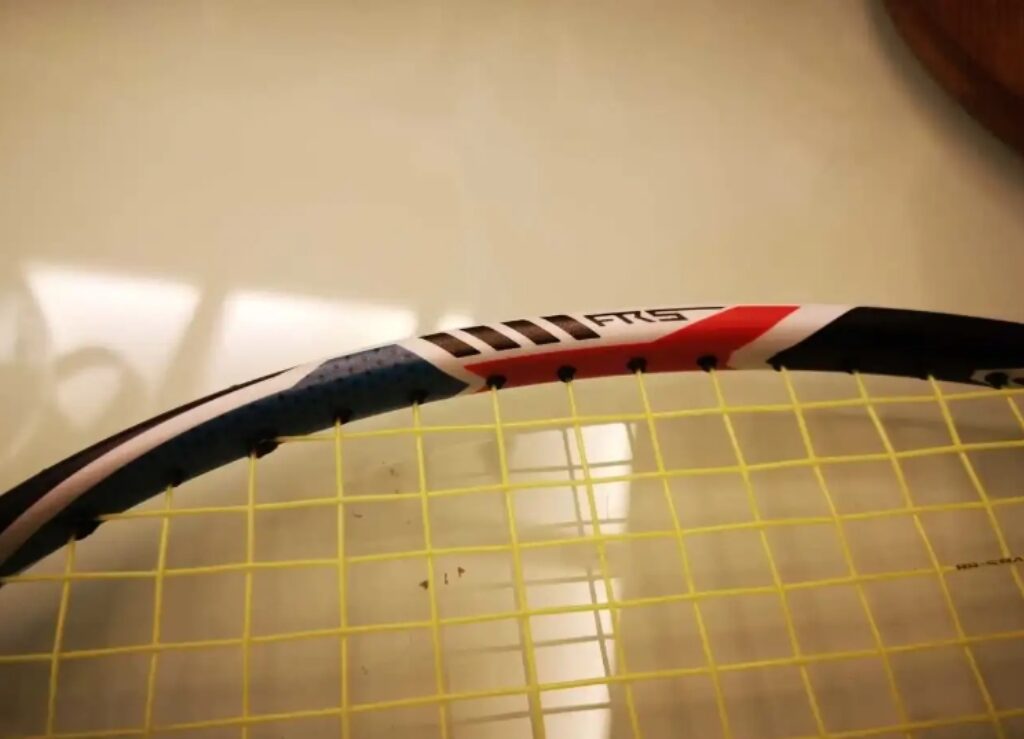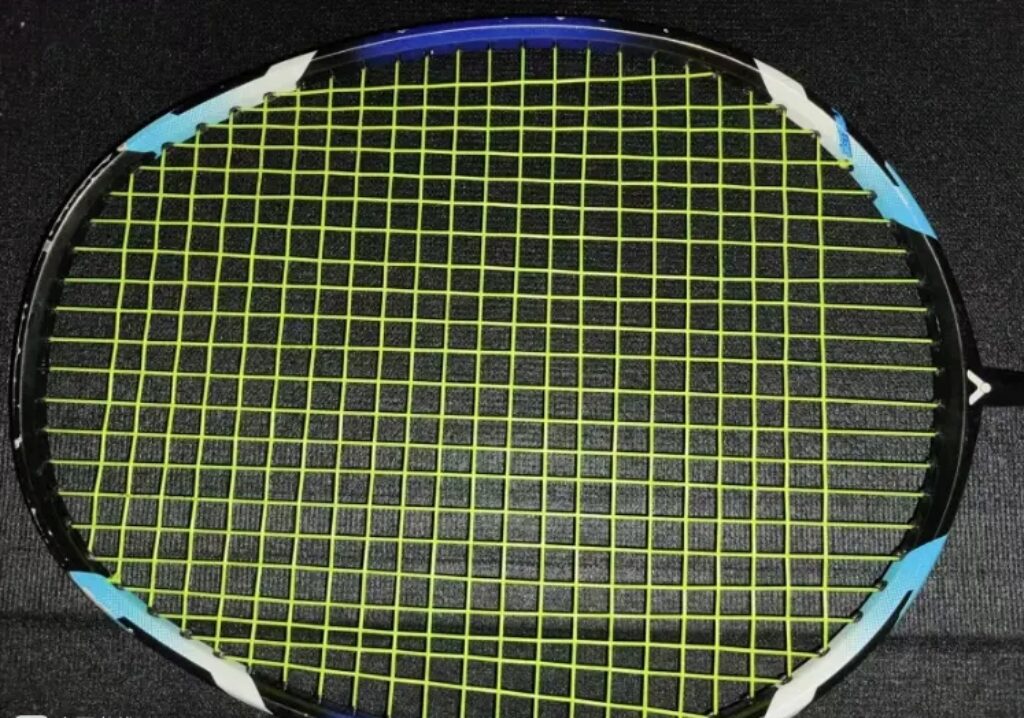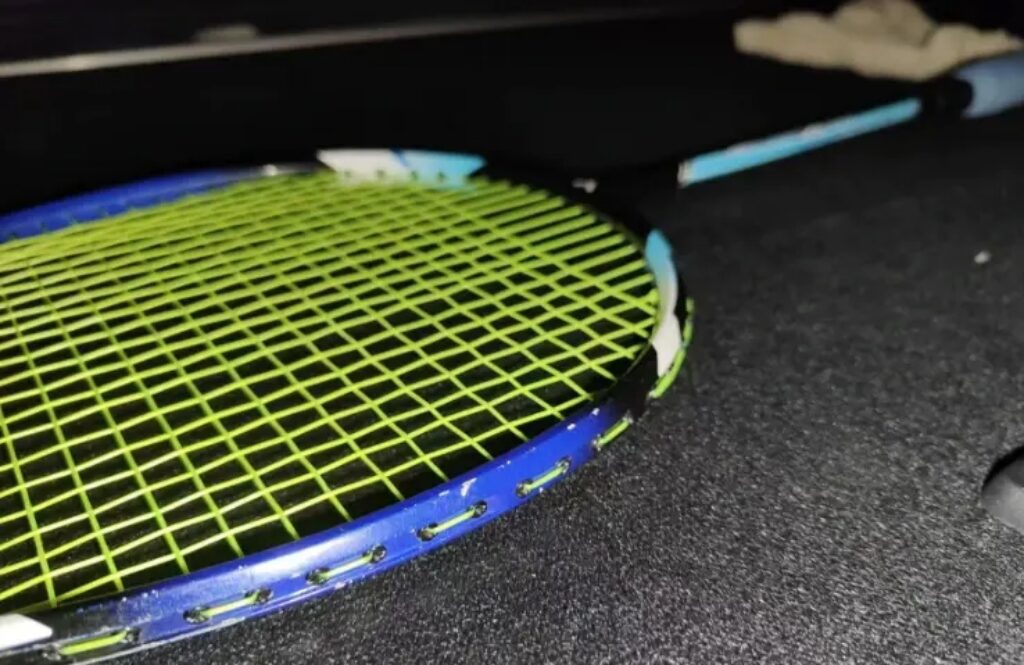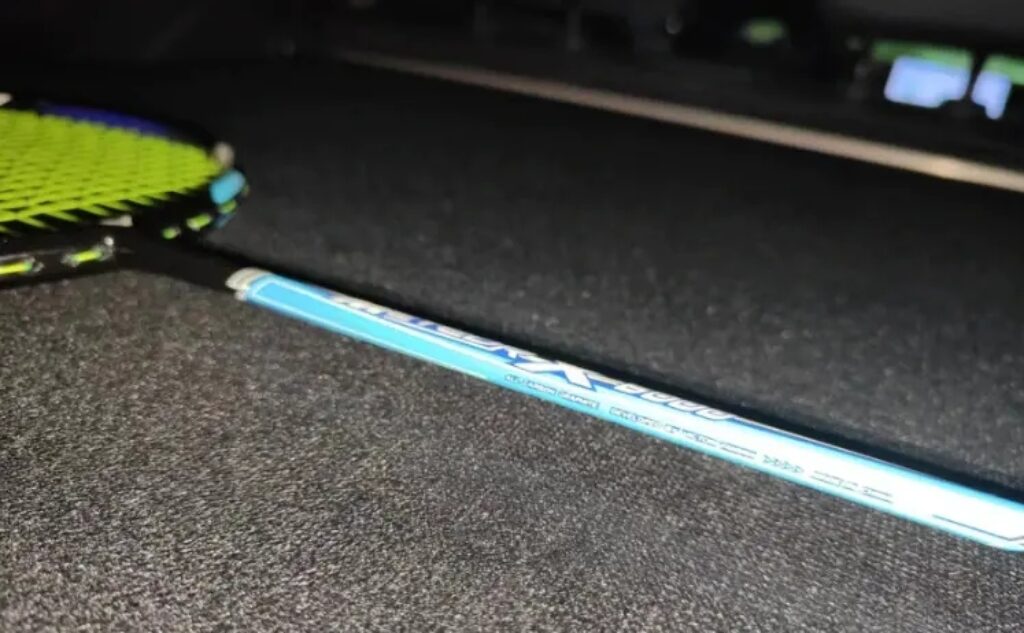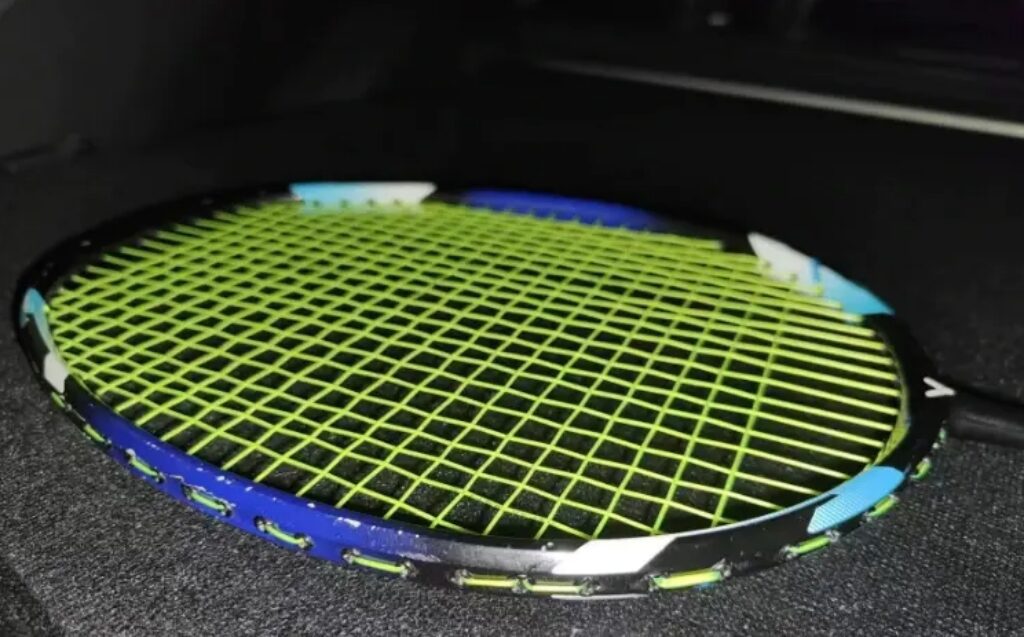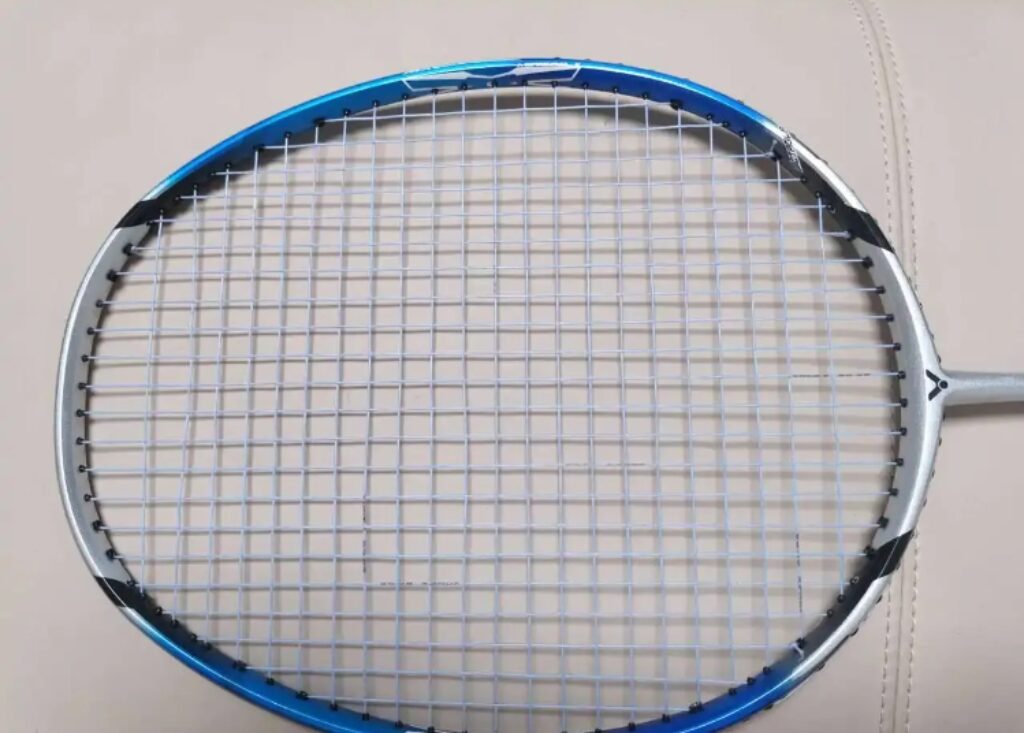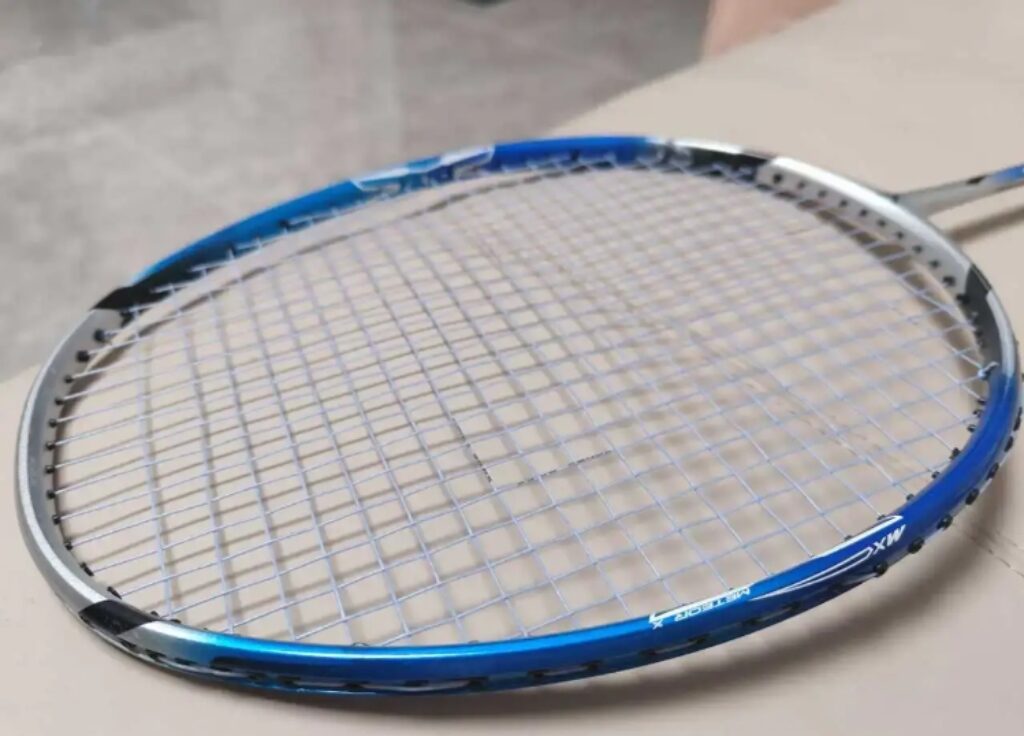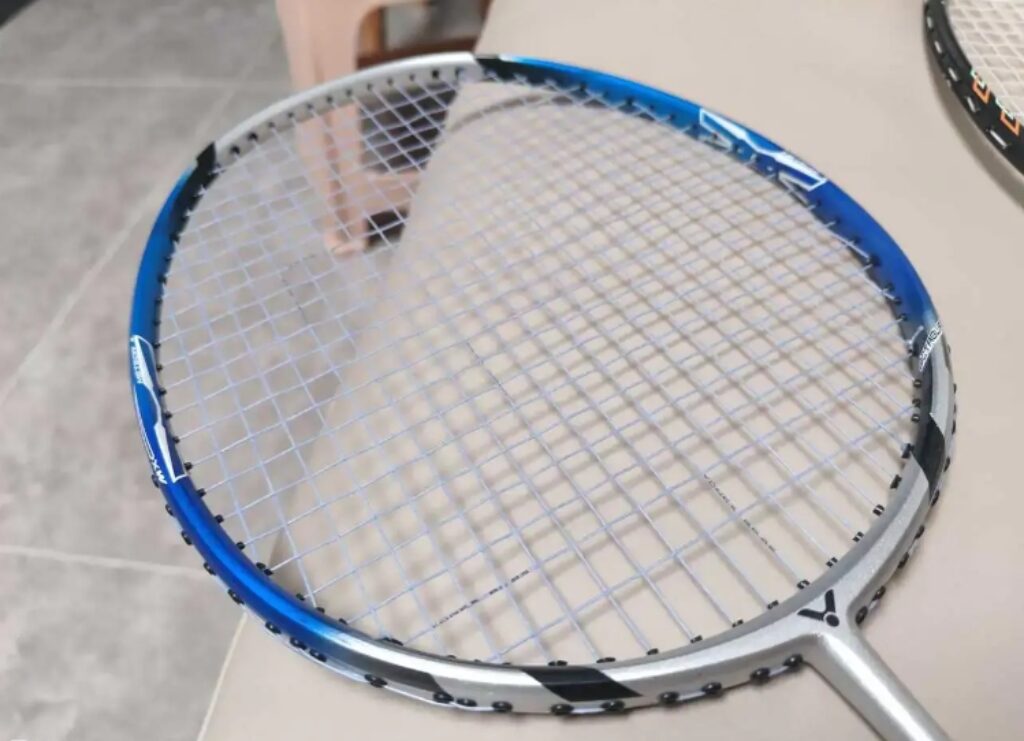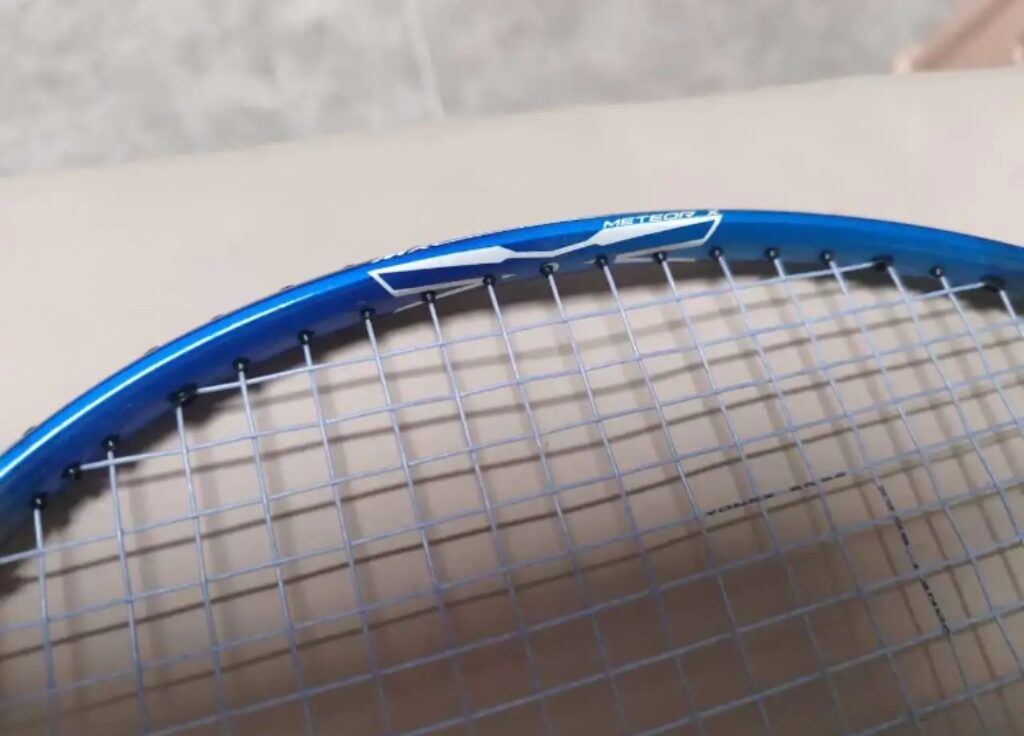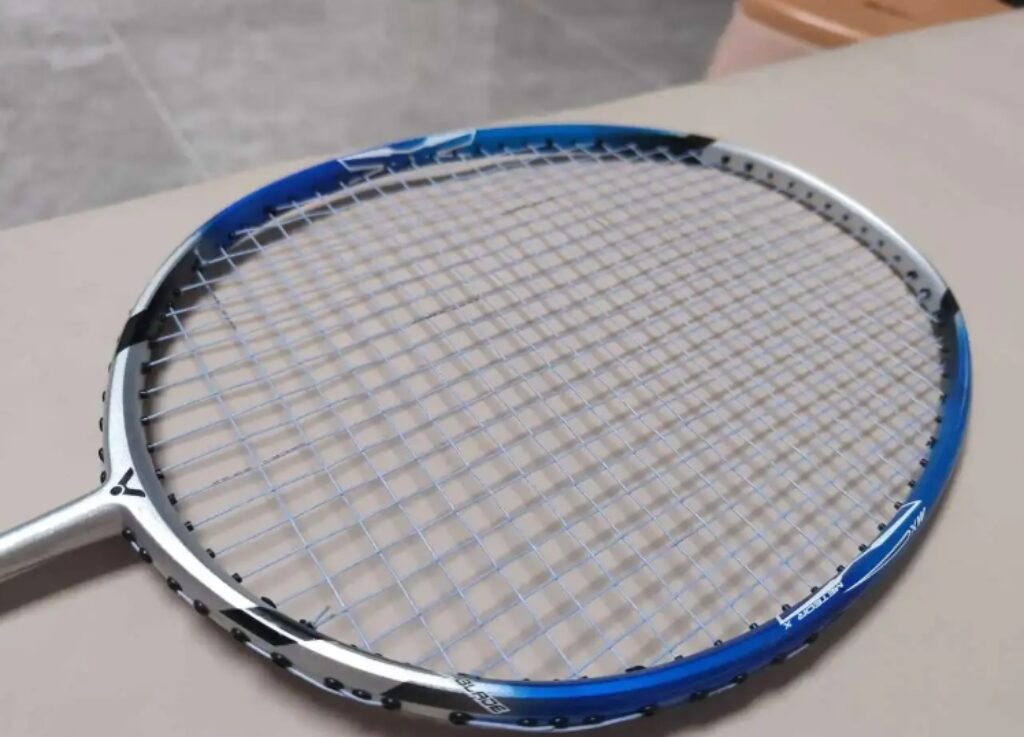The more I experience the HX series, the more I regret its experimental nature.

Parameters: 3UG5, with base and heat shrink wrap, total weight 98g, balance point 292mm, 6.8mm Flash Shaft middle shaft, length 210mm, hard tuning, diamond windbreak frame, 10-4 point string groove, warranty 30 pounds, strung at 25-26lbs with BG80P.
The high-end HX series paint jobs are very attractive. I haven’t encountered any mediocre ones so far. With its white base coat, silver high-gloss stickers, and overall glossy finish, the color scheme is quite orthodox, without obvious feminine or masculine aesthetic traits. However, the paint’s durability on the sharp edges of the windbreak frame still shows weakness. When I received the racket from the seller, it was in excellent condition after just a few clears. However, small blemishes appeared due to the rubbing of the rackets stacked together.
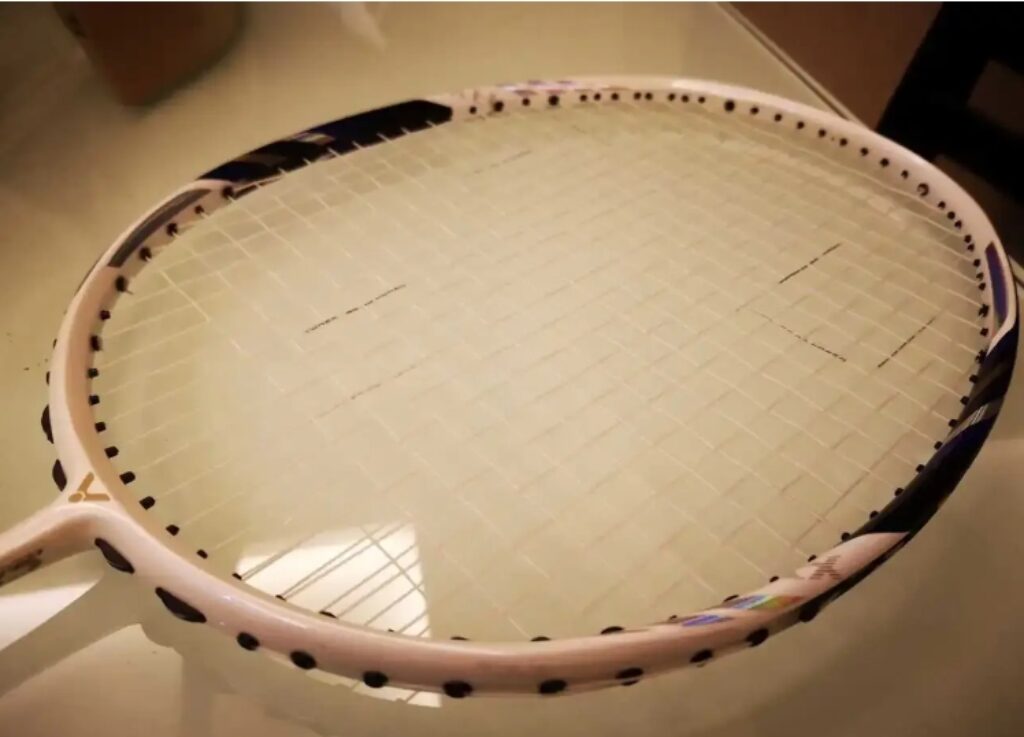
From the specifications, there is no difference between the HX600 and my HX-Sun. Both have good swing speeds when unstrung but with a slightly head-heavy feel, making the HX600 feel quite well-balanced. Except for the weight, it’s almost identical to the Sun, making me consider how to transition the review naturally to the HX-Sun before the match.
However, a fellow player pointed out that there is a difference in the middle shaft tuning between the two. After playing, I indeed noticed the difference — the HX600 has a stiffer feel. The material hardness and weight are different, making the 600’s middle shaft harder to drive compared to the Sun. While the Sun can be used as a more forgiving racket in less optimal conditions, the 600 has less forgiveness.

The HX600 excels in high clears with excellent power transfer and a solid feel. Its performance in terms of frame tolerance, handling of passive shots, defense, and small ball control is similar to the Sun, making it a good reference.
In terms of offense, the HX600 provides more explosive power. Its stiffer feel allows advanced players to get better feedback when smashing, resulting in more forceful and precise shots. On this 3U racket, the diamond windbreak frame’s torsional resistance and M46J’s excellent elasticity are well showcased. Coupled with BG80P strings, it provides a gratifying impact during smashes. However, this level of feedback has a threshold. On the day of testing, my partner’s opponent gave up after a few rallies and switched back to the Xunfeng 10U.
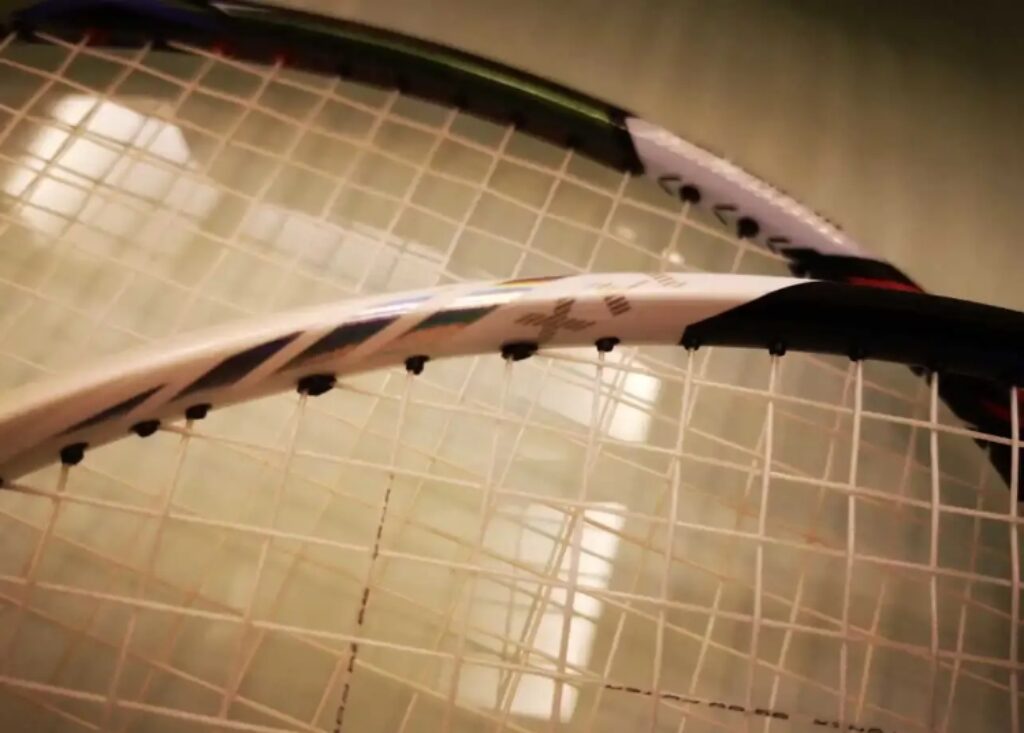
Notably, I also used the HX900X that day. When driving, the Pyrofil and Flash Shaft felt similar in difficulty, but the former had a more brittle feel while the latter was slightly more resilient.
Other experiences will not be detailed here. Compared to the mainstream series like Li-Ning’s Sword, Speed, and TK series, Victory has indeed made many experimental combinations in the HX series. The frame shapes used in HX are quite complex and varied. Although positioned as an all-around racket, some models clearly cater more to speed or attack. The overall characteristics of the HX series are not very clear, with significant differences between models. This might be why the series performed poorly in the market and was eventually replaced by the Yu series.

It is said that this Nanjing long racket was once available at a bargain price? The racket is quite good, but after browsing Taobao and considering its popularity and performance alternatives, the current price is just about competitive. The resale value on Xianyu is also acceptable. Finding a good deal on a second-hand one is still a good idea.











